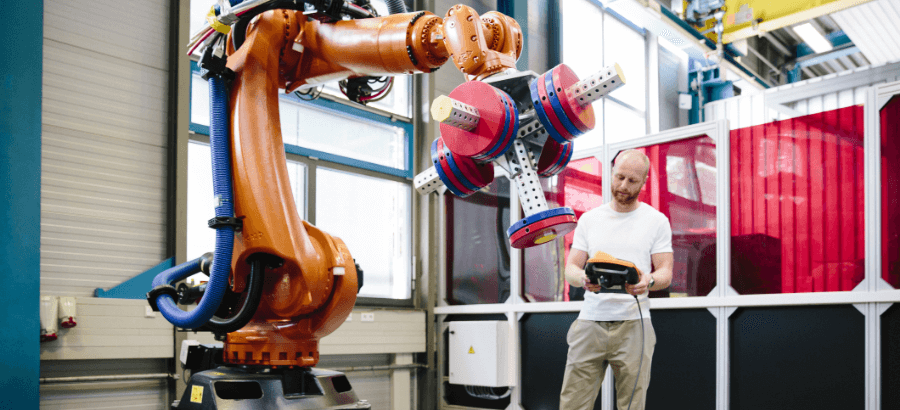We are on the verge of a new and exciting decade, and the pace of innovation is already at an all-time high. For manufacturers and distributors, this means that their ERP software must rise to the occasion, move with the pace of innovation, and support their customers throughout this journey by providing flexible features and easy-to-use functionalities. ERP plays a pivotal role in transformation, but organizations will only see full value when every user is gaining maximum insight from the system.
Meet Personalized ERP: the new standard of technology and user experience (UX) — because no two businesses are alike. Operational differences within an organization tend to determine its distinct competitive advantage, and the new standard of ERP software must take that into account. When designed right, personalized ERP software adapts to every user within the organization – providing flexibility to personalize the workspace.
So, how does this break down within your manufacturing or distribution business? Let’s take a closer look at 3 key ways personalized ERP software will enable you to win in 2020.
1. Boost end-user engagement and adoption
According to KPMG’s future of HR survey 2019, 85% percent of workers indicated that employee experience and engagement is the most valuable organizational offering. Is your organization dedicated to engaging employees? Deloitte reports that poor user engagement with enterprise applications is a leading reason enterprise software fails to deliver the desired business results for organizations. Poor engagement and negative user experience in the workplace could cost you. Here’s how:
- Employees feeling overwhelmed by too much information, capabilities, and complex user interfaces
- Users unable to access or configure the tools that can provide maximum performance gain
- Lack of real-time visibility into accurate information — hindering decision-making and the ability to take immediate action
- The typical costs associated with customization obstructing efforts to personalize user interfaces
It’s critical for leadership to get ahead of potential engagement and adoption issues by investing in ERP software that is designed to be flexible and personalized to meet your team’s individual needs and accelerate user uptake. Whether it’s the type of data needed to perform a task or method of delivery such as cloud, mobile, Bots, artificial intelligence, or machine learning, etc., it’s all about providing a UX that is personal and customizable to each employee’s individual role. This positive experience is proven to boost engagement and user adoption – so that you leverage your most critical investment—your people.
2. Surface the right information for total optimization
As a CMO, I know how vital it is to surface the right information to enable the team to create impactful content and make appropriate data-driven decisions. The ability to show initiative and do their own educated analysis is personally rewarding for each person. An ERP software system that can be personalized without excessive administrative rights or going to IT simply packs a powerful employee engagement punch. Putting the power of p new technologies like Artificial Intelligence (AI) amplifies the impact
Last year, PwC reported that 72% of executives surveyed believe that AI in the enterprise is a business advantage for the future. What’s more, 54% of business executives say AI solutions implemented in their businesses have already increased productivity.
How does this work for manufacturers and distributors?
Through the utilization of ERP capabilities like predictive search, chatbots, and real-time business analysis and insights, your business can act quickly and efficiently – becoming proactive rather than reactive. Removing some of the manual and mundane work from every user’s daily experience can be a competitive game-changer. A high level of business intelligence enables your organization to understand its markets and customers at a much deeper level so that every move you make is simply smarter and naturally builds in a user-initiated continuous improvement culture.
3. Attract and maintain top talent
A hot topic on every American manufacturer’s mind right now is the workforce gap. Baby Boomers are retiring at an accelerated rate (often referred to as the “Silver Tsunami”), and the ability to fill their roles is a challenge. Advocates for the manufacturing industry are educating the next-generation workforce about the exciting opportunities careers in skilled trade can provide, but it will take more than marketing to bring these workers in the door and keep them engaged.
The incoming workforce wants to be part of an organization that’s innovative, future-proof, and understands the need for a collaborative and flexible work environment. What keeps the next-gen worker coming back each day is the ability to make a difference and contribute to the bottom line. If leadership in your organization acts as a bottleneck by not providing tools to enable efficiency, you will ultimately lose talent.
Deploy your competitive weapon in 2020 and beyond
The talent you procure and the caliber of data or predictive insight your ERP system is able to provide will greatly influence your business’ future as we transition from Industry 4.0 to Industry 5.0. A personalized and elevated customer experience will continue to be paramount and is an area of focus that will allow you to surpass competitors as you adopt Industry 5.0 and continue to innovate. Partnering with a trusted and forward-thinking ERP vendor, with an easy role-based technology architecture, can get you there at lightning speed.







